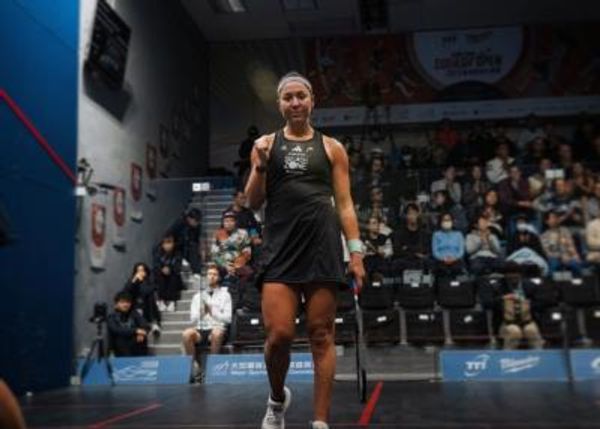
No bottle of hair dye could possibly hold as much history as Clairol nice ’n easy, No 512, a shade of dark auburn launched in 1975. The extraordinary face on the side of its bottle belonged to Tracey Norman, one of the first African American models to make it big and the second black woman, after Beverly Johnson, to appear on the cover of Vogue.
By the time her large eyes and sharp cheekbones became the face of No 512, Norman’s career was booming and her shade became a bestseller soon after its launch. Laverne Cox, best known for her role in the TV series Orange is the New Black, remembers Norman’s face on that bottle, as do many other millions of American women. As Cox told New York Magazine last year: “I can’t tell you how many hours I stared at that photo of her on that Clairol bottle and that caption, ‘Born Beautiful’. Yeah, we are born beautiful.”
Norman, however, was keeping an extraordinary secret. As a trans woman she was making history, all the while hoping that no one else would ever know. Cox, a trans actor, and every other woman who bought a bottle of No 512, had no idea that the beautiful black woman on the side of the Clairol bottle had begun life as a biological boy. Norman was, in short, the first black transgender model.
In recent years, rapid if overdue progress has been made in the realm of trans rights and trans visibility. Now trans models such as Andreja Pejić, Carmen Carrera, Lea T and Hari Nef walk runways and secure campaigns for major fashion labels. Forty years ago, however, the word “trans” barely existed and prejudice was such that the idea of a trans model being “out” was unthinkable, even horrifying, to a far less enlightened world. As such, Norman would say a prayer before each shoot: “Please don’t let this be the day.”
She “passed” as a cisgender female for years before that day came around in 1980. Norman was, as she understands it, outed on a shoot and with that, her career was in effect terminated. Now, however, Clairol has welcomed her back into the spotlight and in front of the camera. Last week the brand announced Norman, 63, as the face of its new “Color As Real As You Are” campaign. In the accompanying video, Norman reminds us: “Back in the 70s it was a different world for transgender women … I had to hide my truth.” The clip ends: “It’s good to be back and it’s really good to be me.”
Clairol’s global associate brand director Heather Carruthers said: “We’re honoured to bring back Tracey Norman as a woman who no longer has to hide her truth.”
In the words of Janet Mock, a transgender advocate and the author of the bestselling memoir Redefining Realness, Norman’s reunion with Clairol is “one of those full-circle narratives of affirmation and acceptance that further chips away at the persistent myth most trans people have done so much work to unlearn: that we are not enough – not good enough or ‘real’ enough.” Mock also points out that Norman is not just African American and trans, but a woman in her 60s – an age, she says, “when our society tells women to go away and hide”.
Mock adds: “As a black trans woman who has to grapple with a culture that tells me I am not beautiful because I am trans and I am not beautiful because I am black, seeing this living legend shine is a beacon of affirmation that, yes, we are beautiful, but more importantly we are whole, deserving and worthy.”
For Norman, who knew from a very young age that her body did not match her gender, such affirmation was hard to come by. Born in Newark, New Jersey, she was the first person in her family to graduate from high school. On the same day in 1969 that she received her diploma, she summoned the courage to tell her mother the truth. Her mother, in turn, told her she had always known.
Within two years, Norman had begun taking hormones, thanks to a doctor working under the table for the transgender community, and was not just “passing” as female, but turning heads for her beauty. She became interested, albeit tentatively, in the idea of modelling.
One day in 1975 she spotted a group of well-known black models on the street and followed them into the Pierre hotel in New York, assuming they were heading to a fashion show. In fact they were heading to a casting. Norman, who hung back so as to be last in line, found herself facing a panel of three people. She had no idea that they were an Italian Vogue editor, the fashion designer Luciano Soprani and the photographer Irving Penn. To her astonishment, she received a phone call the next day telling her she was booked for a two-day photoshoot that paid $3,000 – more money than Norman had seen in her life. By little more than chance and chutzpah, a black girl from New Jersey in 1970s America had just gone from virtually nothing to the pages of Vogue. Only Norman knew that the whole truth was even more extraordinary.
Enthusiastically endorsed by Penn, who bragged that he had discovered the next Beverly Johnson, Norman signed to Zoli agency, which began, as she has put it, “booking me left and right”.
One of her most loyal clients was Essence, a magazine Norman had worked with plenty of times before it booked her for a shoot for its Christmas issue. All was going well until a hair assistant, a man who had always asked Norman probing questions about her past, entered the shoot and spoke to the magazine’s editor, Susan Taylor. Norman recalled that, soon after, the shoot was shut down and, with it, her career. She believes the hair assistant had discovered her secret. Taylor has since told New York Magazine that she has no recollection of this: “No one could have outed her to me. I always suspected she was genetically male. I accepted her as she presented herself, as an exquisitely beautiful black woman.”
None the less, Norman maintains this is the day her career ended. As she told New York Magazine: “Beauty and fashion is all about illusion. So when the doors were opened for me, I walked right through. And then the doors slammed … Once the doors closed, I was no longer a woman and I no longer got the respect of a woman.”
About 18 months after that shoot, Norman bought a ticket to Paris where she got by for two years working in mostly low-profile jobs. Then, she returned to New York and signed with a small agency. When she was hired for an Ultra Sheen cosmetics ad, her third beauty contract, it seemed like a comeback. And yet word had spread so fast in New York that when the ad ran, everyone knew her foremost as “the girl who’d been a boy”.
After that she was unable to get work and she gave up her apartment and moved back in with her mother. In the intervening years, Norman has earned a living at Show Center, a burlesque peep show featuring trans women in Times Square. She has also become an “icon” and “legend” (these terms have specific status) in the ballroom community, in which different houses, which operate like surrogate families for LGBTQ youth of colour, compete against each other in drag balls. She rose to the rank of “mother” in the House of Africa, hence her full name, Tracey Africa Norman, and in 2001, she was inducted into the ballroom house of fame.
The success of her Vogue days, however, seemed distant and irretrievable. Then, last December, New York Magazine ran a cover story and, once again, her life changed. Norman, who has spent decades training herself in invisibility as a mode of survival, needed convincing to agree to such high-profile press. Yet, “I was reminded,” she said, “that I made history and I deserve to have it printed.”
In the wake of the profile, Norman’s career has been reborn. That is most evident in the Clairol contract – a personal triumph and homecoming for a woman shunned by her profession for decades. More important, though, it is a triumph for trans visibility.
As she told the Huffington Post: “I’m hoping people will take away from this that I am human and I was presented with this great opportunity to better my life. Unfortunately, because of people’s prejudices I was not able to do it.” Unlike so many, however, she was afforded a second chance.







